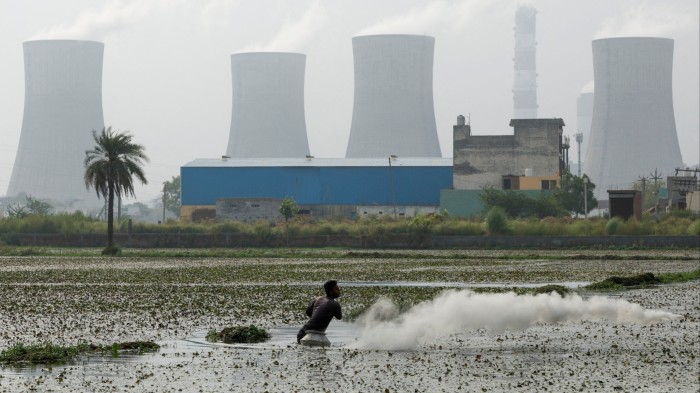Unlock the Editor’s Digest for free
Roula Khalaf, Editor of the FT, selects her favourite stories in this weekly newsletter.
The writer is the founder and chief executive of AlphaGeo and author of ‘The Future is Asian’
The November COP29 summit ended predictably: a last-minute, watered-down commitment to support developing countries in their urgent climate adaptation efforts was delivered. India’s delegate then led the equally predictable outcry with a fiery diatribe against the paltry sums promised. India is right to worry: it is facing a combustible mix of climate volatility and demographic vulnerability from being an overpopulated poor country.
There is a widespread consensus that India will be the world’s fastest-growing large economy for the next decade and perhaps beyond. The World Bank recently upped its growth forecast for the country from 6.6 per cent to 7 per cent in the fiscal year to next March 31. Yet India still faces major economic headwinds such as slow structural reforms, trade barriers, too heavy banking sector regulation and high youth unemployment.
And almost entirely ignored in the heady growth forecasts is the role of climate change. This is in spite of environmental shifts beginning to bite into India’s corporate sector. Leading food delivery app Zomato cited heat stress in explaining its lower-than-expected Q1 earnings, and infrastructure giant Larsen & Toubro is shifting working hours to adapt to searing heat. Ironically, during the COP summit, India’s air pollution reached record levels, with schools closed and flights grounded.
Asia as a whole — and south Asia in particular — is bearing the brunt of global climate volatility. Asia now accounts for more than half of global greenhouse gas emissions, which have in turn led to record-breaking heatwaves, droughts, floods, hurricanes and rising sea levels. More than 80 per cent of India’s people live in districts that are at risk of climate-induced disasters, according to the World Bank.
In October, the Asian Development Bank warned that climate change could hit India’s GDP by as much as 25 per cent by 2070. This is not unrealistic: a third of India’s GDP is linked to nature-related sectors. Increasingly frequent droughts are threatening agricultural output, a “day zero” water event, in which all water sources dry up, has already hit Chennai and heatwaves are stressing the electricity grid. India’s most recent official Economic Survey claims that the country is spending more than 5 per cent of GDP on climate adaptation.
It is also important to note that one of India’s most significant exports is people. Climate stress will only accelerate the brain drain to countries with a more temperate climate and labour shortages. That will in turn have an economic impact.
It is clear that climate-neutral growth forecasts for India need a systematic correction. The nascent field of climate econometrics is making welcome progress on this more generally. Swiss Re has issued dire warnings about the aggregate hit to global GDP from increasing climate stress. S&P considers climate hazards — sea level rise, extreme heat, flooding — to calculate GDP at risk and the ability of countries to avoid and respond to some of these losses based on their economic and institutional strength.
But the impact of climate change on India’s growth prospects also needs to be looked at more from the bottom up. At AlphaGeo, we have calculated a revised GDP outlook for each state, considering factors such as population density, the sectoral composition of its economy, climate hazard exposure and a composite of metrics such as the reliability of energy grids and flood control measures.
We estimate that India’s GDP will rise up from $3.97tn today to $7.75tn by 2030. This represents a climate correction of about $500bn from the Ministry of Finance’s projections for state-level growth that suggest an aggregated trajectory to $8.26tn at the end of the decade — a substantial penalty for a developing country, to say nothing of the human toll it represents.
India needs climate econometrics that capture more granular data on the real-time impact of natural disasters on supply chains and commercial activity. This is possible by methods such as collecting satellite imagery of night-time lights and real-time commercial transaction data. But even a perfect digital twin of the economy is less useful than pragmatic measures such as flood controls, water desalination and communal cooling centres that ensure population health and infrastructural resilience.
Living up to India’s dreams of superpower status will require nothing less. India may yet remain the fastest-growing large economy, but this will only remain the case if climate adaptation becomes a strategic priority for the government, corporates and investors.
Read the full article here

